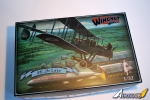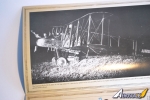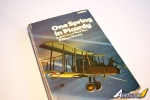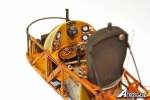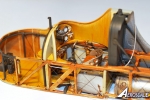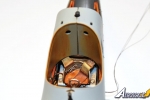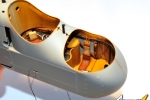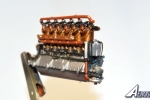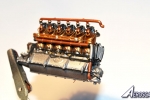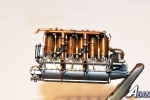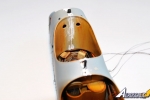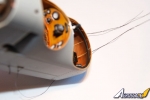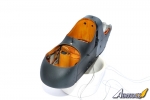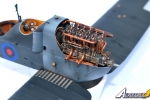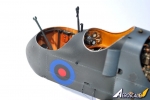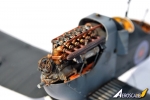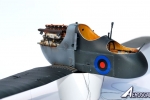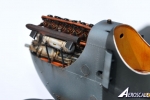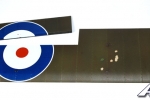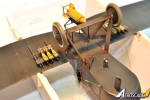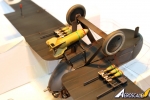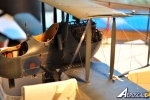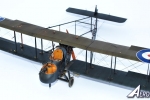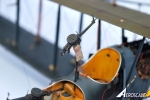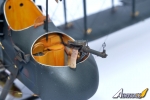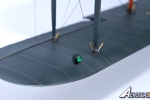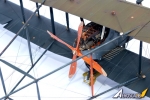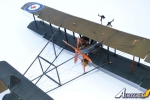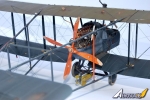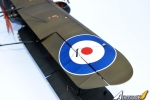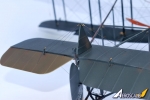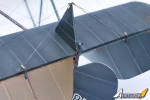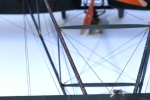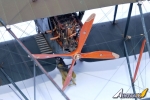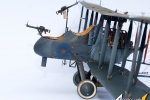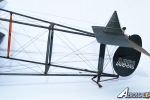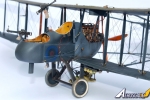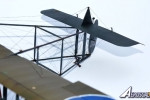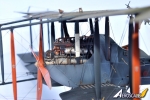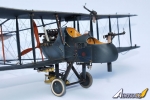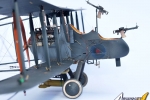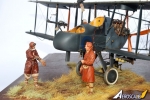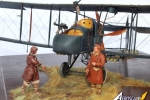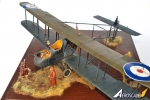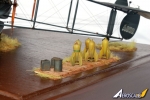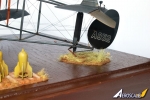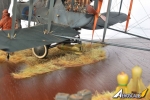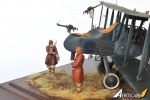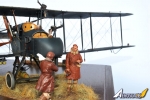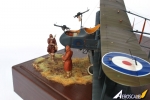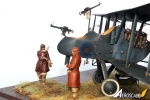One Spring in Picardy: WNW FE-2B
prelude
One spring in Picardy – on a dark and moonless night –100 Sqn's FE.2bs are being prepared for the first mission of the night. The ground crews have been working flat out to get as many kites airborne as possible –patching up battle damage, and tuning the engines. Bombs are all loaded and the Lewis guns have fresh drums. The crews are gathering around their assigned machines, finishing off their tea and cigarettes.Flight Lieutenant Christopher Robson is nervously waiting by the plane for the C.O., Major Callaghan to appear, so they can take off – Here he comes now…
“Robson –what are you waiting for? – An invitation by the King? Get in!” (Very loosely based on William Stanley's fictional charachters)
history
The FE. 2b was an updated version of the earlier FE.2a, that first flew in January of 1915. Initially powered by the 120 hp Beardmore, which in reality was a licence built Austro Damlier engine. Later versions had the 160 Beardmore as its power plant.Pushers were designed to get away from the problem of somehow having to shoot through the propeller arc. This was before the syncro gear was in common use – The design not only gave a free range of fire, it also gave a very good vantage point for the observer.
Despite the size and ungainly appearance the FE.2b was effective in its role as a fighter, bomber and reconnaissance aircraft. It arrived to the front in late 1915 –and became an effective weapon to counter the Fokker E types.
As 1917 came, the daylight skies was a dangerous place for the now outdated plane. However, far from being withdrawn from service, it was reinvented in the night bomber role. Carrying up to 350lb/160kgs of bombs and painted mostly in black dope, it kept flying until the end of the war.
A later version of the FE, the FE.2d was meant as a replacement. However the intended power plant, the Rolls Royce Eagle, was diverted to other uses.
the kit
The Fe 2b. is a strange bird to behold, reminiscent of a flying dinosaur. As such it holds great appeal to me. When WingNutWings announced they were going to produce a kit of it –I was more than a little excited! True to their word they released not one but two kits of this iconic plane. As I was very inspired by the book One spring in Picardy by William Stanley I choose to build the late version as a night bomber. This would also make a pleasant change to the uniform PC10 cammo of most British planes of the time.When the kit arrived, it was soon clear that I was in for a real treat! The large box was stuffed full with beautifully moulded trees together with the glossy instruction/booklet. Dryfitting the wings also dawned on me the size of this bird – it is huge in comparison with a single seater!
building
I built the Fee almost straight OOB – however, there were some parts I thought could do with a bit more work. The engine is very nicely cast, but the Beardmore has a lot of exterior plumbing, that I guess is not possible to include. So here was one stage where I spent a lot of extra effort –partly because I really enjoy kiting out engines. Another point, probably due to limitations in moulding, is in the panel behind the pilot. This was cast as a separate item that would leave a noticeable ”step” where there really should be a continuous curve. There seems to be two solutions to this ”issue” I decided to go the ”split-the-panel-in-half” route –then addressing the new gap before final paint.Rigging is of course a very large part of this build –and looks a bit intimidating at first. However, if you break the job down into sections, and start from the nacelle and work your way out –it is certainly manageable. The key is to plan ahead. I ended up using well over 100 eylets and brass tubes in the process though, and it took me several evenings to finish (not counting the pre-work).
finishing
Paint was mainly done with Tamiya acrylics. To achieve an interesting variations in the surface I used several shades of dark grey sprays with masking and layering. Wood, leather and other items in the cockpit were painted using artists oils. Weathering was also done using layers of oil washes.The figures are from ModelCellar (standing) and Kellerkind (walking). I choose to make a rather large base with some groundwork added to set the kit off.
A couple of notes where I’ve used a bit of artistic licence: The bowden cables releasing the bombs were probably not red. The backward firing lewis gun was probably never fitted to this Fee (even though the parabolic gun mount was installed). It was also brought to my attention by a fellow modeller that the small Hale bombs under the wings were not used as late as 1918. Oh well, I guess the ground crew found a left over stash somewhere…
conclusion
Well, WingNutWings really lived up to their reputation of excellent engineering with this one. Though not a kit for the beginner, it’s about as easy to assemble as it can be. Location holes and tabs are spot on; the tail can be assembled as a separate piece without difficulty or misalignment. Most, if not all, rigging holes are already in place –and although some details are a bit hard to interpret in the instructions, with careful reading –everything sort of falls into place.So If you’ you’re thinking about building a WNW Fee –do! It's a real blast. Just be careful to check you have shelf space enough to place it once you’re finished.
Oh – and I’ve ordered the ”early” version too!
The build log may be found by clicking here.
Copyright ©2021 by Mikael Terfors. Images also by copyright holder unless otherwise noted. The views and opinions expressed herein are solely the views and opinions of the authors and/or contributors to this Web site and do not necessarily represent the views and/or opinions of AeroScale, KitMaker Network, or Silver Star Enterrpises. Images also by copyright holder unless otherwise noted. Opinions expressed are those of the author(s) and not necessarily those of AeroScale. All rights reserved. Originally published on: 2012-09-01 00:00:00. Unique Reads: 10254





